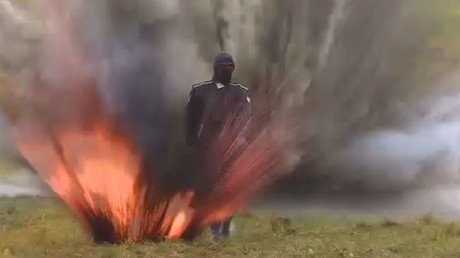Slime mold inspires breathtaking recreation of cosmic ‘dark matter web’ holding our universe together (PHOTOS, VIDEOS)

Researchers using an algorithm based on the growth patterns of a type of slime mold have managed to create a map of the theoretical 'cosmic web' of gas and dark matter which makes up the substructure of the entire universe.
The bright yellow slime mold, dubbed Physarum polycephalum, is a brainless organism that produces networks of slimy tendrils which can somehow 'solve' spatial problems that are surprisingly complex. By studying its growth patterns, researchers have produced oddly accurate models of the wider universe.
Previous models based on this particular mold have solved mazes, calculated the shortest distance between two points and reconstructed the entire Tokyo rail system – no small feat, by any stretch of the imagination.
But how could it be applied to one of the greatest enigmas in astrophysics: the mysterious substructure that holds our universe together despite the fact that, so far at least, we can neither see nor detect it?
"Modern cosmology predicts that matter in our universe today has assembled into a vast network of filamentary structures colloquially termed the 'cosmic web,'" the authors write in their new paper, published in the Astrophysical Journal Letters.
Because this matter is too dark or too diffused to properly detect, tests of the cosmic web paradigm are very limited.
Inspired by the work of German media artist Sage Jenson, the UC Santa Cruz team created three-dimensional models and fed in the coordinates of 37,000 galaxies from the Sloan Digital Sky Survey (SDSS) – a group collectively known as the 'Local Universe' – into the algorithm.
Then the magic happened on a celestial (but digital) scale, as the algorithm churned out a visualization of what the scaffolding which holds the universe together might look like.
While it is merely a fascinating representation of the theoretical cosmic dark matter web, randomised spot checks against Hubble data on hydrogen gas locations in the Local Universe datasets matched up, indicating that, so far at least, the algorithm's network is accurate.
"Wherever we saw a filament in our model, the Hubble spectra showed a gas signal, and the signal got stronger toward the middle of filaments where the gas should be denser," lead researcher Joe Burchett said.
Also on rt.com Physicists claim to have found NEW force of nature which may unravel one of the universe’s greatest MYSTERIESLike this story? Share it with a friend!















